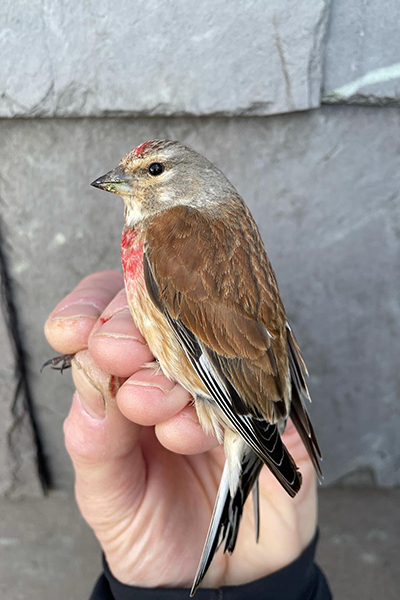A feature of springs on Hilbre are the Linnets. They breed in good numbers on both Hilbre and Middle Eye and last year appears to have been an exceptional breeding season for them. They're a bird associated with music hall songs and a bygone era of trapping wild birds for their singing capabilities. Linnets used to be caught and blinded by sticking needles in their eyes as that somehow encouraged them to sing. They've been immortalised in the music hall song 'My Old Man'
'My old man said follow the van and don't dilly dally on the way'
'Off went the cart with the home packed in it I walked behind with me old cock linnet'
A song about doing a flit from rented accommodation as they couldn't afford the rent and quite common in the late 19th and early 20th century.
Linnets are on the UK red list of species of concern and numbers have dropped dramatically due to changing farming practices and habitat destruction. When I was training to ring at Wicken Fen in the 70's they were still quite common and I got to ring a few. It wasn't until I started ringing again at Hilbre that I became reacquainted with these beautiful little finches in the hand. I'm lucky to have a few pairs breeding close to where we live and a couple of years ago I caught and ringed several in the garden. See here
Ageing and sexing Linnets is quite straight forward in adult plumage but juveniles can be a bit trickier. This time of year you have to be careful of male Linnets looking very similar to females though. In the hand it can be easier as male Linnets tend to have more white on the outer web of the primaries and this reaches the shaft. On females there is a distinct gap between the shaft and the white. A male Linnet with a nice red breast is easy to sex!
 |
| Female Linnet wing showing white on outer web of primaries doesn't reach feather shaft |
 |
| Male linnet open wing. Note extent of white on outer web of primaries compared to female above. |
 |
| Male Linnet - they're easy in this plumage! |





























































No comments :
Post a Comment